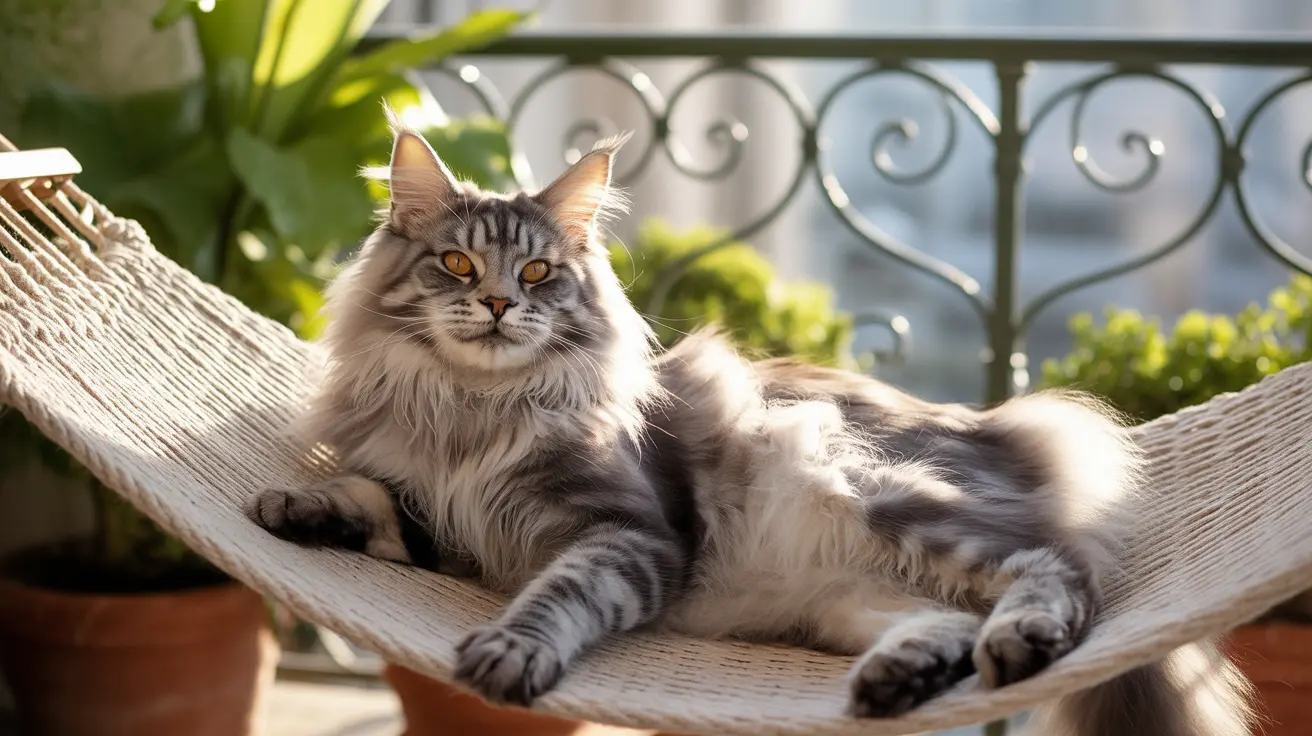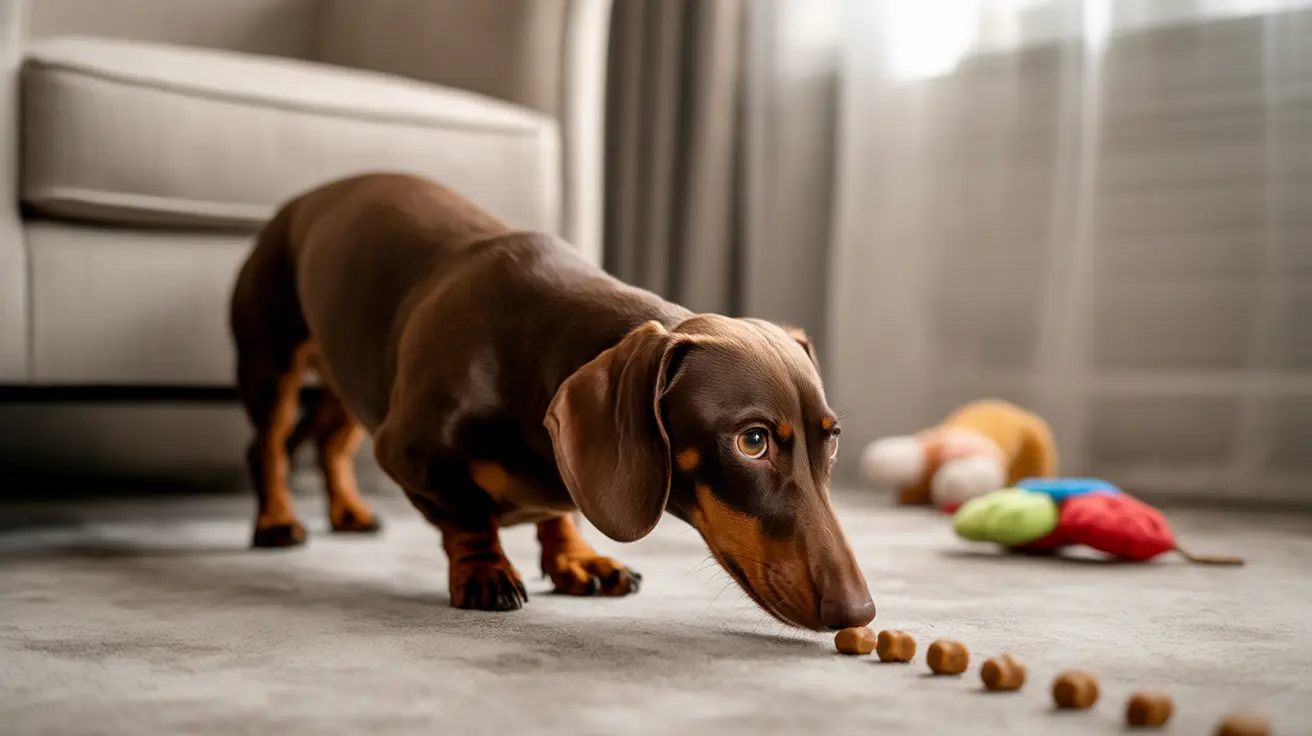Safe Balcony Setup for Cats: Transform Your Outdoor Space into a Feline Paradise
Creating a safe balcony setup for cats can dramatically improve your indoor feline's quality of life by providing access to fresh air, natural sunlight, and enriching sensory experiences. While outdoor cats naturally enjoy diverse environments daily, house cats often miss out on these vital stimuli in their more confined living spaces. A properly secured balcony offers the perfect compromise, allowing your cat to experience the outdoors while maintaining complete safety and security.
The key to successful balcony transformation lies in understanding that cats are natural climbers and jumpers who can leap up to two meters high, making proper safety measures absolutely essential. Without adequate precautions, balconies pose serious risks of falls and injuries that can be life-threatening for cats. However, with the right approach to safety installation, plant selection, and environmental design, your balcony can become a stimulating outdoor retreat that satisfies your cat's natural instincts while keeping them completely secure.
Essential Safety Measures for Cat-Proofing Your Balcony
Installing Protective Barriers
The foundation of any safe balcony setup for cats begins with creating an escape-proof environment using high-quality protective barriers. Cat netting represents the most popular and effective solution, available in various mesh sizes with smaller meshes providing superior protection against cats slipping through gaps. When selecting cat nets, prioritize UV-resistant, tear-resistant, and bite-resistant materials made from high-quality components that can withstand weather exposure and your cat's natural scratching behaviors.
Installation methods for cat nets offer flexibility depending on your balcony structure and rental restrictions. You can attach nets using screws and hooks mounted to walls, ceiling, and floor for permanent installations, or utilize tensioning and telescopic rods that require no drilling and can be adjusted between the balcony ceiling and floor. For tenants concerned about property modifications, telescopic rod systems provide an ideal solution that doesn't damage the structure while maintaining complete security.
Alternative Safety Solutions
If traditional netting doesn't suit your aesthetic preferences or balcony design, several alternative safety options provide equally effective protection. Plexiglass panels offer a transparent, visually unobtrusive barrier that can be custom-fitted to your balcony dimensions. While more expensive than netting, Plexiglass maintains clear sight lines and weather resistance, though it must be installed at sufficient height since cats can jump up to two meters.
Commercial balcony enclosure systems like Oscillot® cat-proof fence systems provide innovative solutions using spinning paddles that prevent cats from climbing or jumping over balcony edges. These systems come in various kit sizes (20, 40, and 300 feet) to accommodate different balcony dimensions and offer easy DIY installation with basic tools. Made from durable, weather-resistant, UV-resistant materials, these systems work effectively across all balcony types while maintaining aesthetic appeal.
Securing Vulnerable Areas
Beyond primary barriers, address specific vulnerability points that cats might exploit for escape attempts. Tilt window protection becomes essential if your balcony connects to windows, requiring specialized grid nets or roller blinds purchased from specialist pet safety shops. Remove or secure any tall furniture positioned near railings, as cats can use these as launching points for dangerous jumps.
Creating Elevated Lookout Points and Vertical Spaces
Cats naturally seek high vantage points for observation and security, making elevated spaces essential components of your safe balcony setup for cats. Install weatherproof outdoor cat trees featuring multiple platforms and enclosed caves that provide varying heights for different perspectives. Ensure all elevated furniture maintains stability and is positioned away from balcony railings to prevent cats from using them as escape routes.
DIY platform construction offers cost-effective alternatives using PVC pipe frames or wooden structures designed to support your cat's weight safely. Create multiple levels at different heights, allowing cats to choose their preferred observation deck while maintaining easy access to ground level. Incorporate scratching posts into these elevated structures to satisfy natural scratching instincts while providing additional climbing opportunities.
Comfortable Resting Areas
Outdoor hammocks made from weatherproof materials provide comfortable sleeping and lounging options that cats particularly enjoy. Position hammocks in areas that receive appropriate sunlight without creating overheating risks during hot weather. Ensure shady retreat spots are available to prevent heat stroke, using furniture placement or purpose-built shade structures to create temperature-controlled microclimates throughout your balcony space.
Cat-Safe Plant Selection and Garden Design
Recommended Safe Plants
Incorporating vegetation into your safe balcony setup for cats enhances sensory experiences while providing natural environmental enrichment. Cat-safe plant options include spider plants, African violets, marigolds, horned violets, cornflowers, and daisies, all of which offer visual appeal without posing toxicity risks. Catnip represents a special favorite among felines, though it requires organic soil and slow-release fertilizer for optimal growth.
Consider aromatic herbs like mint, valerian, thyme, and lavender that provide engaging scents for cats to investigate and enjoy. These plants not only enrich your cat's sensory environment but also contribute to the overall aesthetic appeal of your balcony garden while maintaining complete safety standards.
Plants to Avoid
Removing toxic plants from your balcony environment is crucial for maintaining cat safety. Dangerous species include lilies, poinsettias, tomato plants, and aloe vera, all of which can cause serious health complications if ingested by cats. Additionally, eliminate any watering cans containing residual fertilizer or pesticides, as these chemicals pose significant poisoning risks.
When establishing your balcony garden, use only organic growing mediums and avoid chemical treatments that could harm your cat through direct contact or ingestion. Regular inspection of plants helps ensure no toxic species accidentally establish themselves in your cat's outdoor environment.
Comfort and Enrichment Features
Essential Amenities
A complete safe balcony setup for cats requires basic amenities that support extended outdoor time. Provide fresh food and water bowls that are changed daily, positioning them in stable locations away from high-traffic areas where cats might accidentally knock them over. Consider placing a litter box in a corner location to accommodate cats who spend extended periods on the balcony.
Comfortable furnishing includes outdoor cushions and weatherproof rugs that create cozy resting spots while protecting cats from hard balcony surfaces. Choose materials specifically designed for outdoor use that resist moisture, fading, and wear from regular cat use.
Interactive Elements and Mental Stimulation
Enhance your cat's balcony experience with interactive elements that promote physical activity and mental engagement. Water bowls with floating toys encourage playful interaction while providing fresh drinking water. Tunnels and hideaways create exploration opportunities that satisfy cats' natural curiosity and hunting instincts.
Rotate toys and interactive elements regularly to maintain novelty and prevent boredom. Consider puzzle feeders and treat-dispensing toys that encourage problem-solving while rewarding cats with food motivation during their outdoor time.
Climate Considerations and Weather Protection
Maintaining comfortable environmental conditions throughout different seasons requires thoughtful planning for temperature extremes and weather variations. During hot weather, ensure multiple shaded areas prevent overheating and heat stroke, using umbrellas, awnings, or strategically placed furniture to create cool retreats. Provide elevated resting areas that allow air circulation beneath platforms for additional cooling.
Cold weather considerations include windbreaks and insulated resting areas that protect cats from harsh conditions while still allowing outdoor access. Remove or secure lightweight items that strong winds might turn into hazards, and consider seasonal plant protection that prevents weather damage to your balcony garden.
Legal Considerations and Building Regulations
Before implementing your safe balcony setup for cats, research local building regulations and rental agreement restrictions that might affect your installation choices. Most landlords cannot prohibit cat safety installations if they don't damage building structure and comply with lease agreements, but confirming permissions prevents potential conflicts.
Document your safety installations with photographs and maintain records of any structural modifications for future reference. If permanent installations aren't permitted, focus on removable solutions like telescopic rod systems and portable barriers that provide equivalent safety without violating building restrictions.
Monitoring and Supervision Guidelines
Never leave cats unsupervised on balconies, even with comprehensive safety measures in place. Regular supervision allows immediate response to any safety concerns while helping you identify behavioral changes that might indicate stress or health issues related to outdoor exposure.
Consider GPS tracking collars that create virtual safe zones and provide alerts if cats somehow breach safety barriers. These smart collar systems offer additional peace of mind while allowing you to monitor your cat's balcony activities and location in real-time.
Alternative Solutions for Challenging Balconies
When complete balcony modification isn't feasible, alternative approaches still provide safe outdoor access for cats. Large dog crates can contain cats safely on balconies while allowing fresh air and outdoor sensory experiences. Small catios (cat patios) offer enclosed outdoor spaces that can be installed on balconies without extensive modifications.
Harness and leash systems tied to immovable objects enable supervised balcony time under direct owner control. While requiring constant supervision, this approach works well for cats who adapt to harness wearing and provides flexibility for temporary outdoor access.
Frequently Asked Questions
Should I let my indoor cat spend time on the balcony?
Yes, with proper safety measures in place, even long-term indoor cats benefit greatly from balcony access. Fresh air, natural sunlight, and sensory stimulation from outdoor sights, sounds, and smells significantly enhance their quality of life and mental wellbeing.
How high should I install cat netting on my balcony?
Cat netting should extend from the balcony ceiling to the floor and be installed tightly to prevent gaps that cats might exploit. Since cats can jump up to two meters high, any barriers must account for this jumping ability to maintain effectiveness.
Can I install cat safety measures without drilling holes in my balcony?
Yes, telescopic rods that tension between the balcony ceiling and floor provide secure mounting points for netting without requiring drilling. Cable ties and heavy-duty attachments can secure barriers to existing railing structures without permanent modifications.
What plants are completely safe for cats on balconies?
Cat-safe plants include spider plants, African violets, marigolds, horned violets, cornflowers, daisies, catnip, mint, valerian, thyme, and lavender. Always use organic soil and avoid chemical fertilizers or pesticides that could harm your cat.
How do I know if my landlord will allow balcony safety installations?
Review your rental agreement for pet-related clauses and structural modification restrictions. Most landlords cannot prohibit safety installations that don't damage the building structure, but obtaining written permission prevents future conflicts and ensures compliance.
What should I do if my cat escapes from the balcony despite safety measures?
Start searching immediately both indoors and in nearby outdoor areas. GPS tracking collars help with location and recovery efforts. Contact local animal control and veterinary offices to report the escape and provide identification information.
Are there ready-made solutions for balcony cat safety?
Yes, commercial systems like Oscillot® cat-proof fence systems offer complete solutions with spinning paddles that prevent climbing or jumping. These come in various sizes (20, 40, 300 feet) with easy DIY installation instructions and weather-resistant materials.
Conclusion
Creating a safe balcony setup for cats transforms your outdoor space into an enriching environment that significantly enhances your indoor cat's quality of life. By implementing proper safety barriers, selecting cat-friendly plants, providing comfortable amenities, and maintaining appropriate supervision, you can offer your feline companion the benefits of outdoor experiences while ensuring complete security and protection.
The investment in balcony safety measures pays dividends through improved cat behavior, enhanced mental stimulation, and the satisfaction of seeing your pet enjoy natural sunlight, fresh air, and engaging sensory experiences. With careful planning, appropriate materials, and attention to both safety and comfort, your balcony can become a beloved retreat that satisfies your cat's natural instincts while maintaining the security and control of indoor living.






